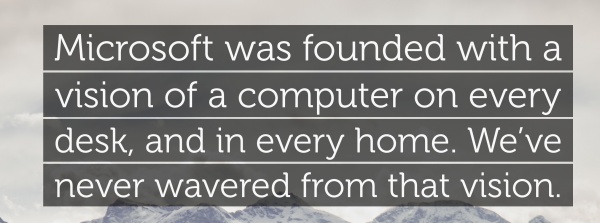What went wrong with software for prisons
It became just another business, in one more market.
Twelve years ago, I told the story of two inmates that were using Open Source Software and methods to help other inmates. Today…

<u><em><strong>CAPTION:</strong>
<a href="https://commons.wikimedia.org/wiki/File:Female_inmates_inside_their_maximum_security_prison_cells.jpg" target="_blank">Inmates, from Wikimedia Commons</a>
</em></u>
Today, that program seems to have disappeared, and “our degree of civilisation might be revealed by the technology used inside prisons. So starts an Al Jazeera report about “prison surveillance and e-carceration”, and the important role Microsoft plays in that system.
A computer on every inmate

They just expanded it.
</em></u>
In recent years, Microsoft and its business partners have started providing an array of solutions to prisons, courts and community supervision programmes, that covers the entire correctional pipeline, from “juvenile delinquency” to pretrial and probation, into prison, and after inmates are released on parole.
Some of these products are used in african countries where, on one hand they help inmates from "[spending] the rest of their lives in the prison because nobody even knows they are there”. On the other, the same “Big Data”, non-negotiable approach erases the more human systems of “open-air prisons” that have worked well in several places, for a long time.
Three core products, all 360
A particularly interesting part of that array of solutions is a triplet co-developed with another company called Tribridge:
- Offender 360: first flagship product for correctional services, designed to surveil, predict and analyse the correctional pipeline. Designed to “integrate, index, and expand every bit of data available about inmates for computer-based functionality and analytics”, that follow prisoners wherever they go, and evaluates which are prone to violence or recidivism.
Youth 360 is basically Offender 360 for “youth offender” management, integrating data from school and public health systems, in order to perform youth assessment and screening for “criminogenic risks, needs, and strengths”, on every youth put on probation.

He's using Microsoft Software, likely.
</em></u>
Pretrial360 offers case management and predictive analytics software. Its (how opaque?) risk assessments provide judges with information about defendants and inform decisions about holding or releasing alleged offenders.
Together, this triad of “360” stuff builds, and may never forget, a complete “360-degree view” of each person, in order to identify traits like aggressiveness or predict behaviours, such as “escape risk” or the likelihood of committing a crime.
Weird names, wrong incentives, and unsurprising similarities
The Al Jazeera piece is about 5K words long, but I hope the quotes above, plus my few comments below, give you plenty of reasons to read it all.
First, it would be ridiculous to not use data and digitization at all in prisons, or for community supervision. But as it is right now, this whole “e-incarceration” thing is identical, at every level that matters including long-term effects, to that other machine that makes it harder to recover from debt. How surprising.
Second, Off…ender 360? I’ll be weird, OK, but I find disturbing to give software like this a name so similar to something made to create business reports and spreadsheets. Then again, it’s always numbers, isn’t it?
Third, something that the excellent Al Jazeera piece gets wrong. What prevents software like this from being “scrutinised by the public” is not the fact that it is proprietary. Software licenses are (almost, see next point) irrelevant here, for the same reason why Facebook just CANNOT provide transparency: you cannot evaluate algorithms without the data they should process. To get transparency here, we should make public mountains of personal data that have no reason to be public.
Fourth, and more important: it is also wrong to say that “Digital transformation makes it possible to consider prison as a business”. What is happening here is just digitization, in a very worrying way, of what was already a business, at least in some countries. And it seems to be happening with little or no intention to improve thing, as clearly shown by this sentence, about another “prison software” described by Al Jazeera:
_“Microsoft offers prisons its Aware Solution at a price per person per day.
What is the real incentive, or the business sense, of writing software that improves any correctional system if, by contract, the longest people stay in prison, and the more they are, the more money you make?
Final question: what is the status of software-empowered carceration and correction in other countries? Please let me know!
Who writes this, why, and how to help
I am Marco Fioretti, tech writer and aspiring polymath doing human-digital research and popularization.
I do it because YOUR civil rights and the quality of YOUR life depend every year more on how software is used AROUND you.
To this end, I have already shared more than a million words on this blog, without any paywall or user tracking, and am sharing the next million through a newsletter, also without any paywall.
The more direct support I get, the more I can continue to inform for free parents, teachers, decision makers, and everybody else who should know more stuff like this. You can support me with paid subscriptions to my newsletter, donations via PayPal (mfioretti@nexaima.net) or LiberaPay, or in any of the other ways listed here.THANKS for your support!